- Exhibition
A Vessel, a Veil
A. Faysal Altunbozar and Martha Poggioli
06 May–21 May 2019
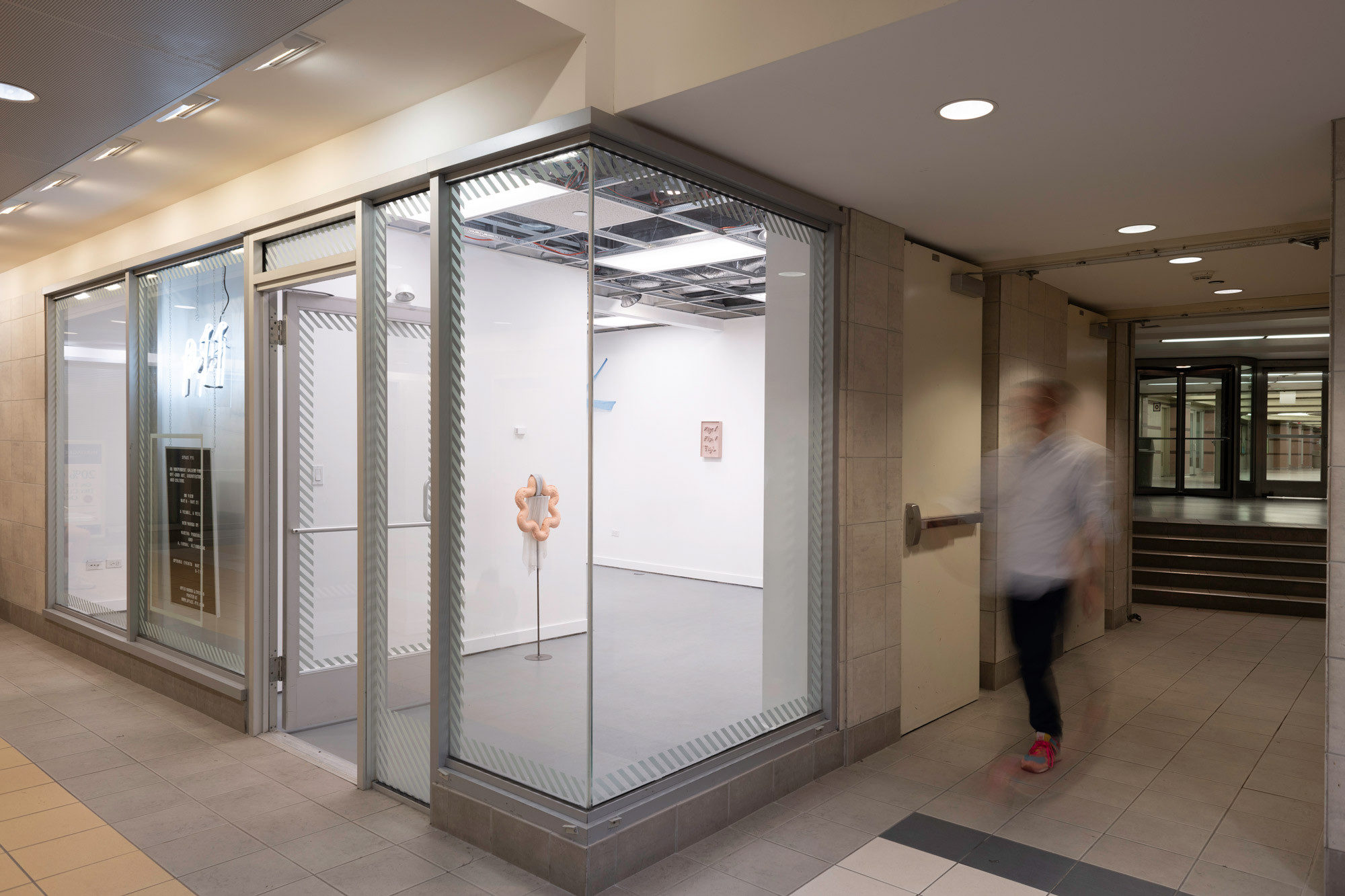
New works by A. Faysal Altunbozar and Martha Poggioli
Curated by Duncan Bass
The form of a fluid is defined in relation to its container. Generally dismissed as a mere metaphor, the body functions as a prototypical container-establishing our most intuitive sense of interior and exterior. The works in A Vessel, a Veil explore the body as a container and anthropomorphize the built environment, insisting on an uncanny intimacy between objects, bodies, and the spaces they construct.
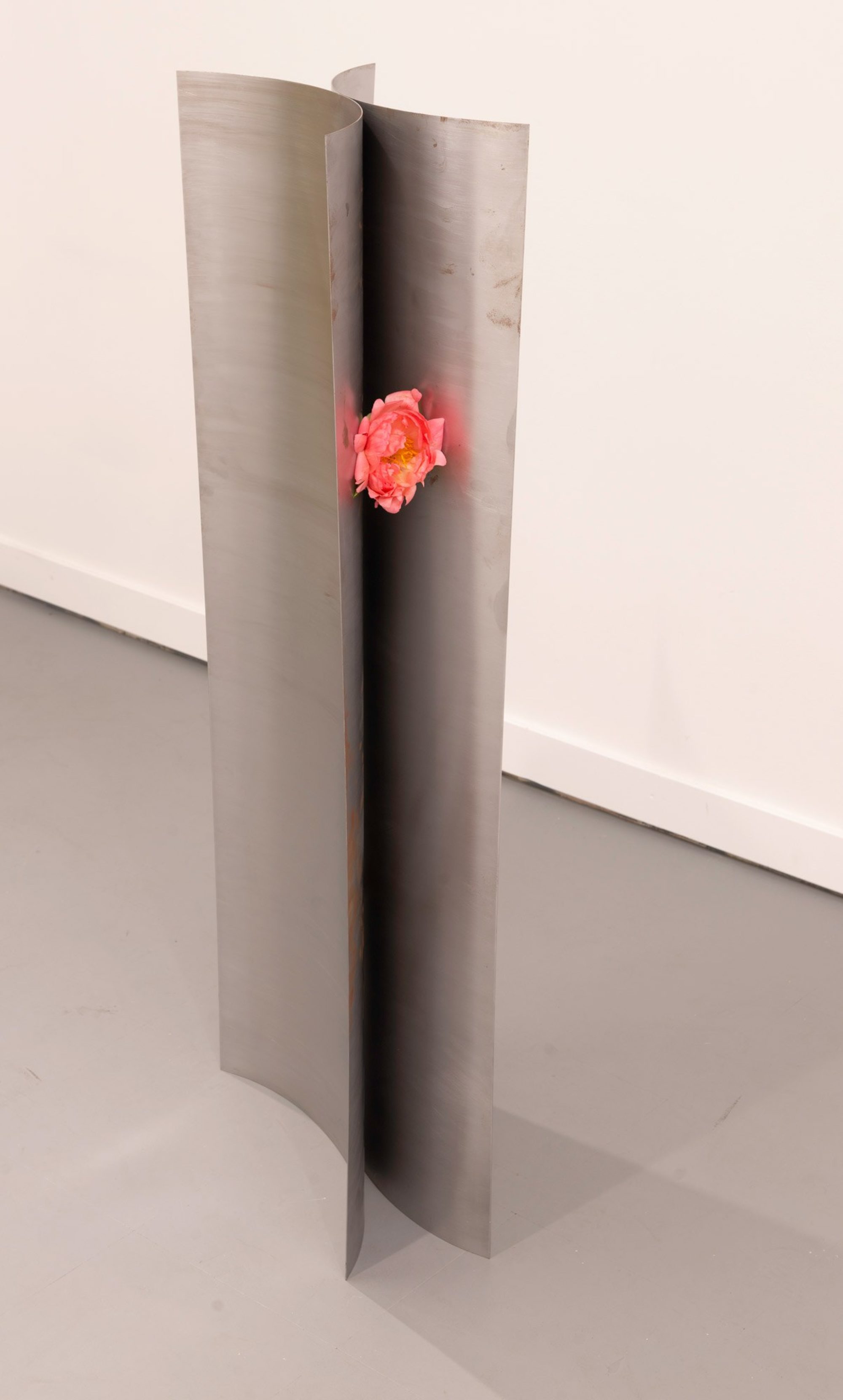
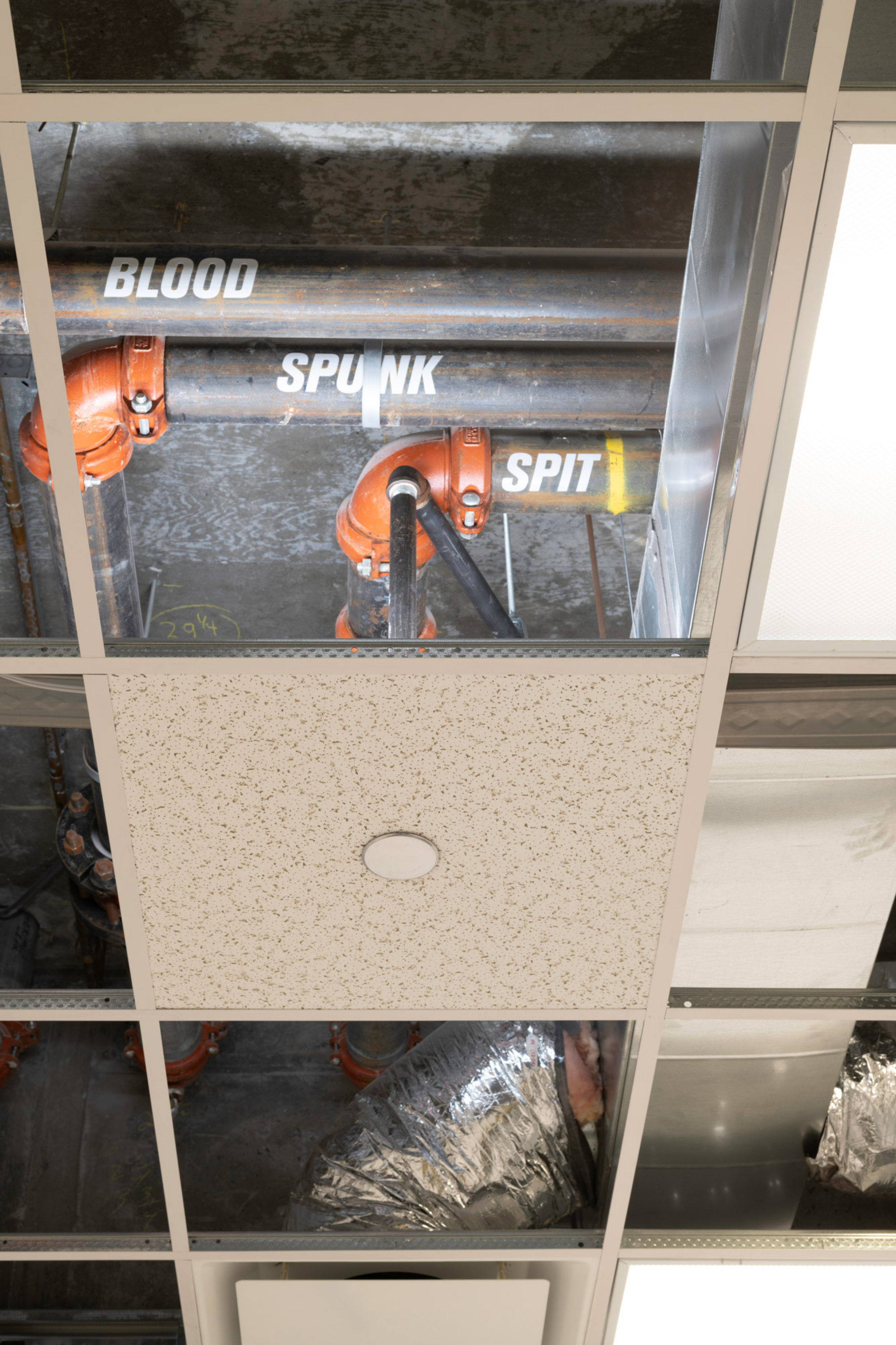
A. Faysal Altunbozar' s contributions hide in plain sight, employing hyper-visibility as a mode of poetic disguise. Simultaneously abrupt and abstract, these objects engage physical and virtual space, illuminating vernacular technologies embedded in queer culture.
Formed by two rolled steel plates, Vase No. 2 (lamb,) reimagines the prepared carcasses displayed in the windows of Turkish butchers through an act of Calderesque abstraction. Yet, where Alexander Calder's nearby Flamingo relies on monumentality saturated color and monumentality, Altunbozar's Vase No. 2 (lamb) retains a naturalistic scale and strips the coat from the abstracted animal, leaving only a raw metallic flesh. Where the two pieces of steel meet, a delicate rod supports a single flower, alluding to a local Turkish tradition of concealing the anus of a butchered animal-in some cases with herbs or flowers-justifying the gesture through a paradox of modesty.
An earlier screenprint, Study for a vase, serves as a counterpoint, vividly rendering the vessel in question-the stark black of a flower winding through a subtly-textured anal cavity that has been isolated entirely from its bodily context. Informing one another, these works question the selective visibility of sexuality in contemporary culture, wherein queer bodies are objectified, yet physical intimacy is suppressed.
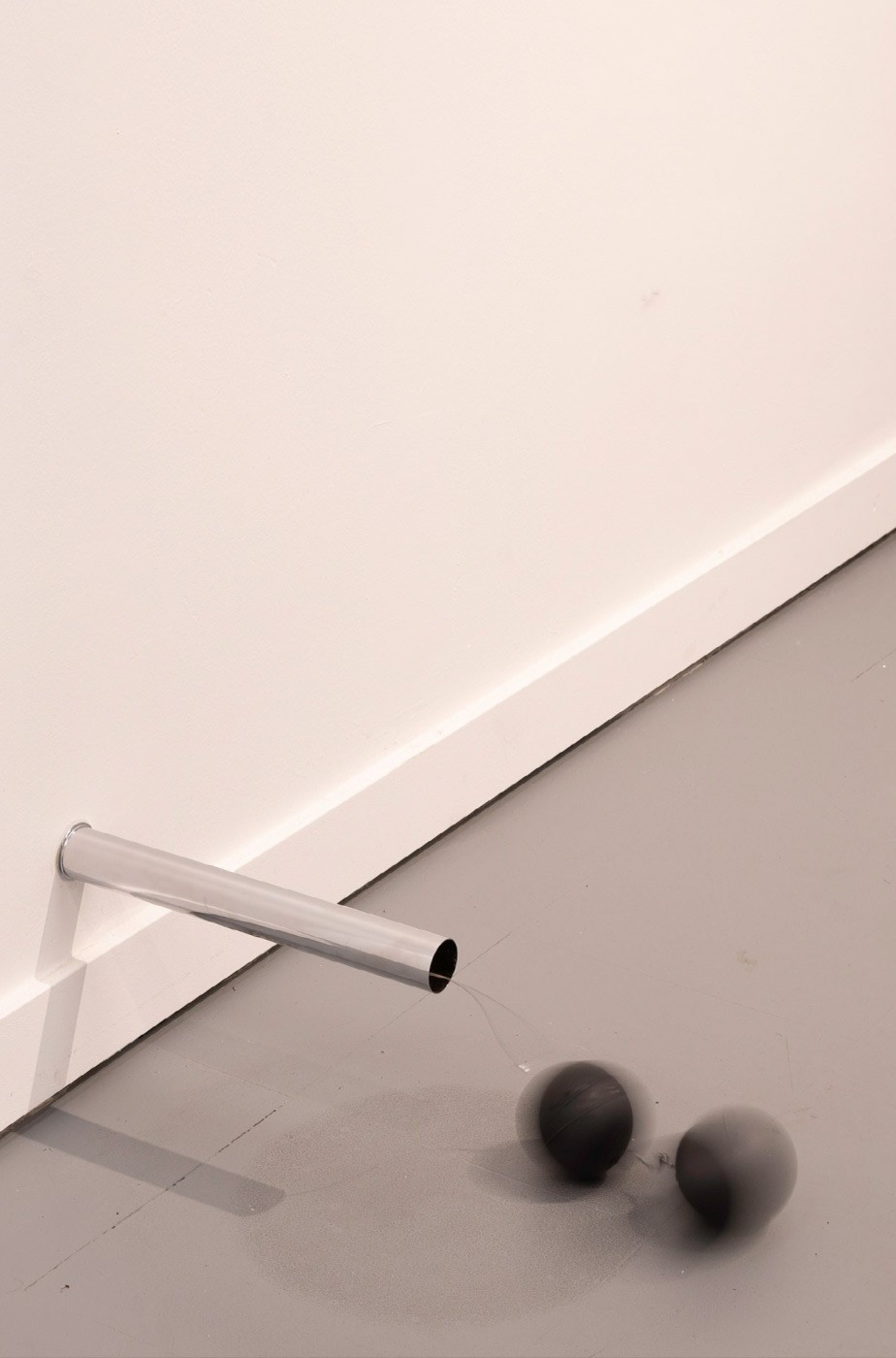
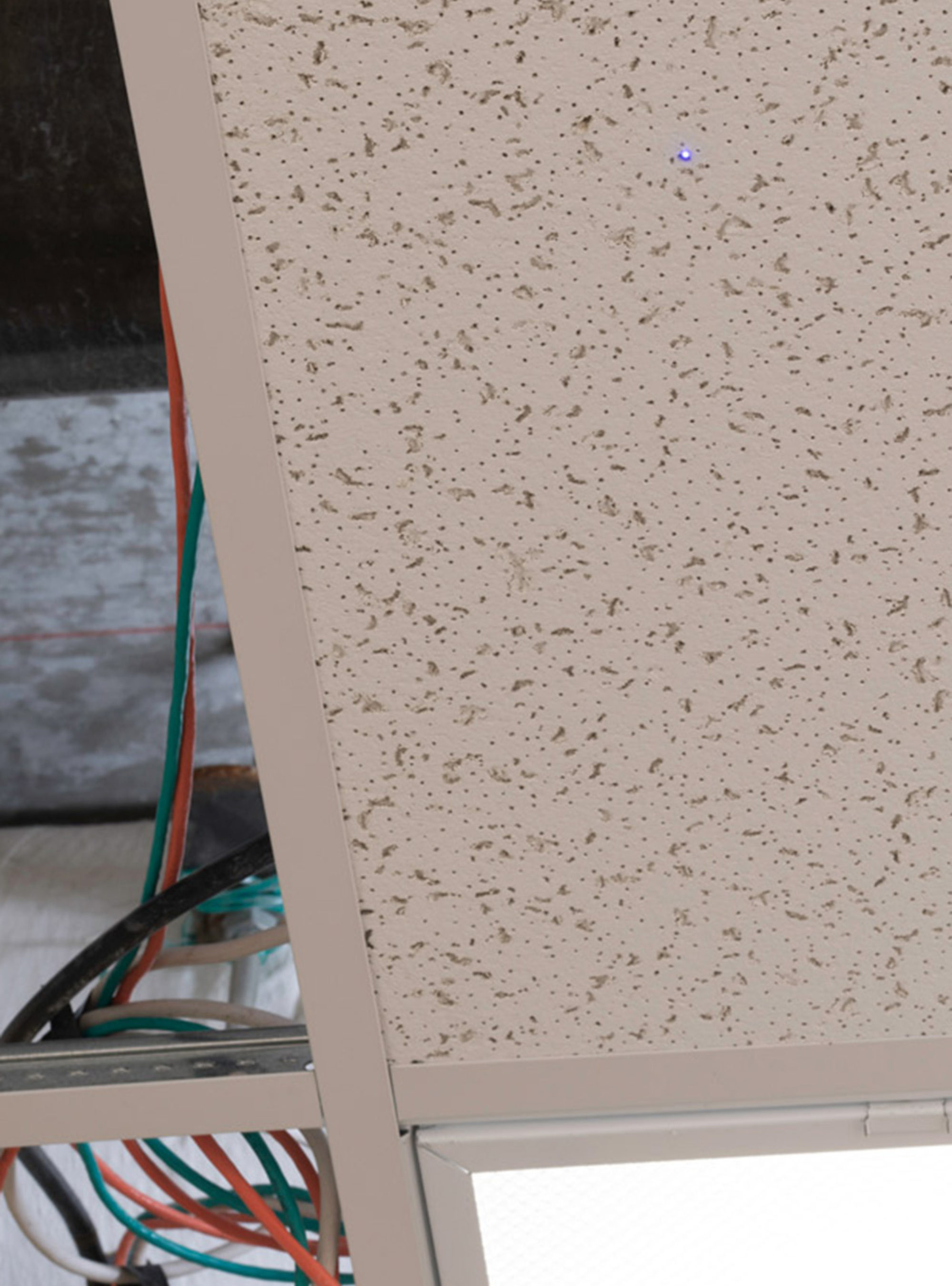
Altunbozar's kinetic sculpture Pearling explores a similar duality by anthropomorphizing the built environment rather than objectifying the body. Once more, the sculptural form appears ambiguous, comprised of two black spheres, linked by a steel cable that disappears into the open end of a chromed pipe that extends from the gallery wall. The balls squirm on the gallery floor, frantically pulling against their tethers. Whether they are desperately trying free themselves from confinement or distraught by their inability to return through the pipe, this animated string of beads generates unanticipated empathy, obscuring distinctions between subject and object.
Overhead, a frieze of reflective texts. collectively titled fluid structures. interrupt the building's infrastructure. composing an expanded poem that is reordered as the viewer moves through space. References to bodily fluids and recreational drugs make clear parallels between the inner-workings of the built environment and the body, their exposure also suggesting the exposure of an underground culture. Despite Altunbozar's explicit reference to sexual intimacy, the queerness of fluid structures stems primarily from its formal characteristics: its placement within the would-be-concealed infrastructure: the juxtaposition of the pristine text against the soiled pipes; and the inability to access the work from a single vantage point.
Shell no. 11 extends Altunbozar's intervention into virtual space by equipping preexisting infrastructure with a bluetooth chip, anthropomorphizing the built environment by making it discover able if not visible. A continuation of the series a shell and a wink. this covert presence references a form of digital cruising that began in the early 2000s with the rise of personal cell phones; by renaming their devices queer people, mostly gay men, were able to communicate surreptitiously, reclaiming public space. Drawing on this tradition. Shell no. 11 seeps into the digital layer of the city hoping to be found proposing different strategies of occupying space and articulating desire.
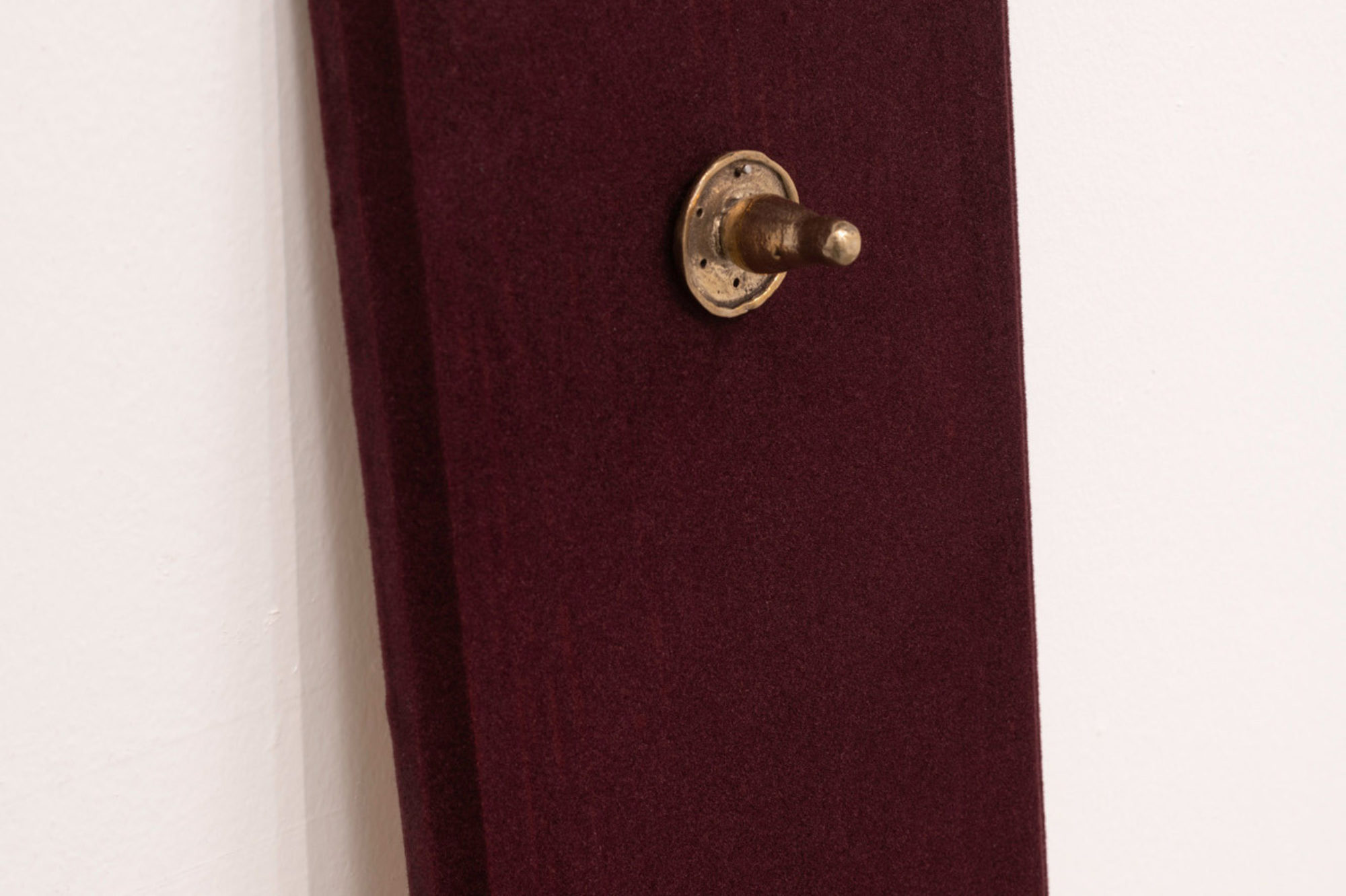
Excavating the material histories of internal prosthetics. recent works by Martha Poggioli explore the tension between containment and concealment. As objects of contraception. sterilization. and medicinal or structural support for the internal architecture of the body, pessaries are. by nature. physically concealed from view and irrevocably tethered to the bodies they inhabit. Poggioli's ongoing series Fuzzy Objects incorporates the disparate visual languages of archaeological display, patent document s. and post-minimal sculpture. tracing the iterative process of re-invention that produced this industrial species.
The earliest reference in this deconstructed lineage Partial Replica from J.S. Milne (Plate LI) performs an act of experimental archaeology, recreating a plate from Milne's Surgical Instruments in Greek and Roman Times. The original artifact lost, Milne repurposes an illustration from an earlier text and provides only a single measurement to contextualize the three-dimensional object. Without this textual information the body serves as a system of measure from which to extrapolate the historical form.
While this form attempts an accurate recreation, its presentation is an uncanny hybrid of traditional and contemporary display strategies. The bronze pessary is affixed near one end of an ornate plaque; its surface and decorative edges flocked in a deep red, the color and texture simultaneously invoke conventional museological displays and bodily interiors. Leaning vertically against the gallery wall, this composition grounds itself in the realm of contemporary sculpture, directly engaging the body of the viewer in space and terminating at the height of the organs it is meant to inhabit.
Investigating a similar relationship between text, image, and object, Hofmann's Figs (Patent Numbers t,US65382, 11US98769, 11US307944) analyzes the most ubiquitous element linking historical accounts such as Milne's to the legal documents of the patent system: the abbreviated label 'Fig 1'. The label accompanying each of these images connects the iterative process of object evolution to its representation and textual description. Isolating this presumably inconspicuous element, Hofmann's Figs juxtaposes three handwritten labels from a series of patents received by Ernst Hofmann between 1867 and 1884, each superseding the authority of the last. Enlarging the text indicates the material evolution of the documents themselves, showing traces of the analog original in the script and of its digital simulation in the pixelation.
Further, Poggioli extrudes these texts into the third dimension, replicating the material translation applied to Partial Replica from J.S. Milne (Plate LI) ta complicate the relationship between object and document. Demonstrating how the object and the document each function as temporary containers for the fluid concept of a form defined by the human body Poggioli challenges the notions of individual authorship and intellectual property intrinsic to the patent system.
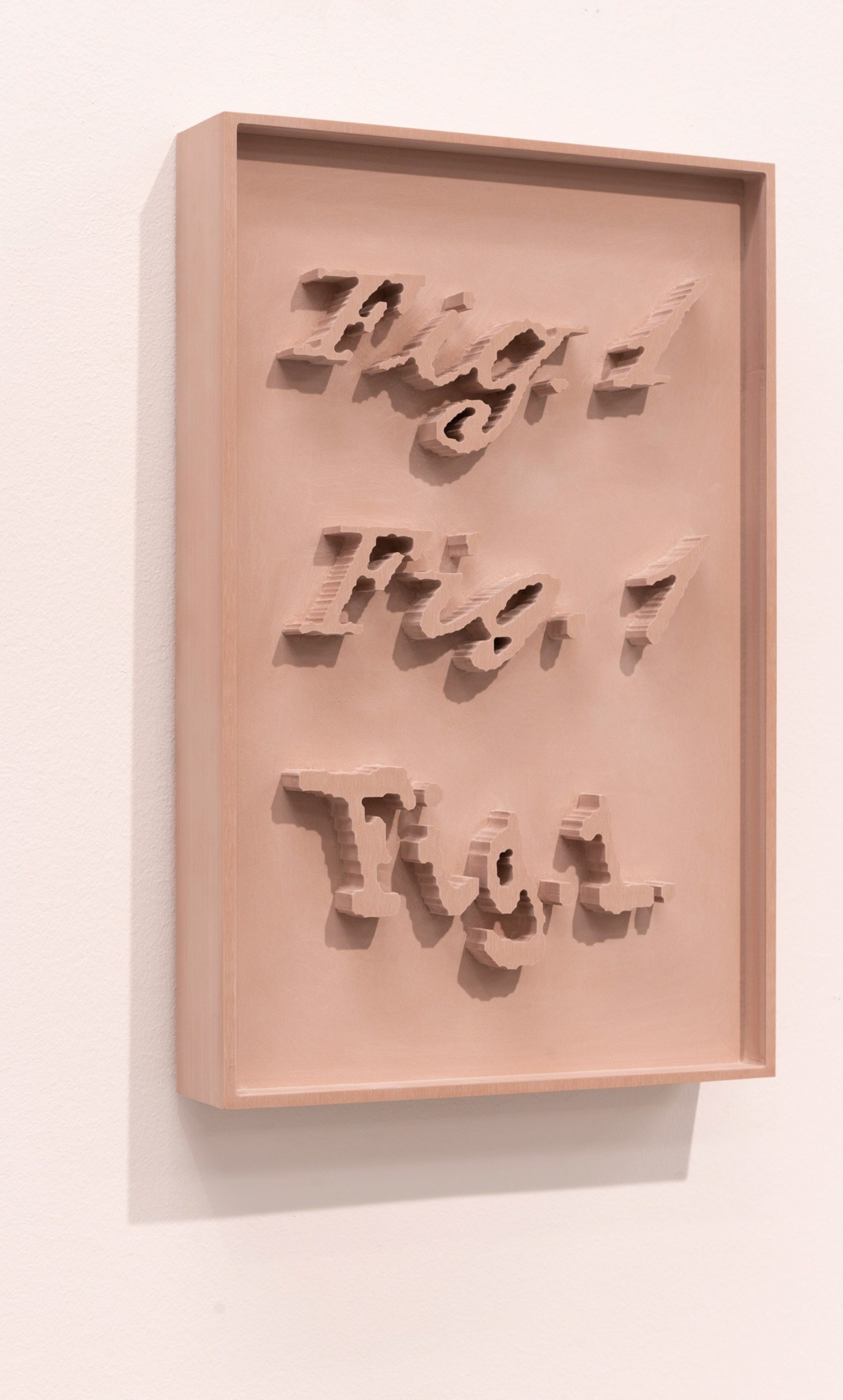
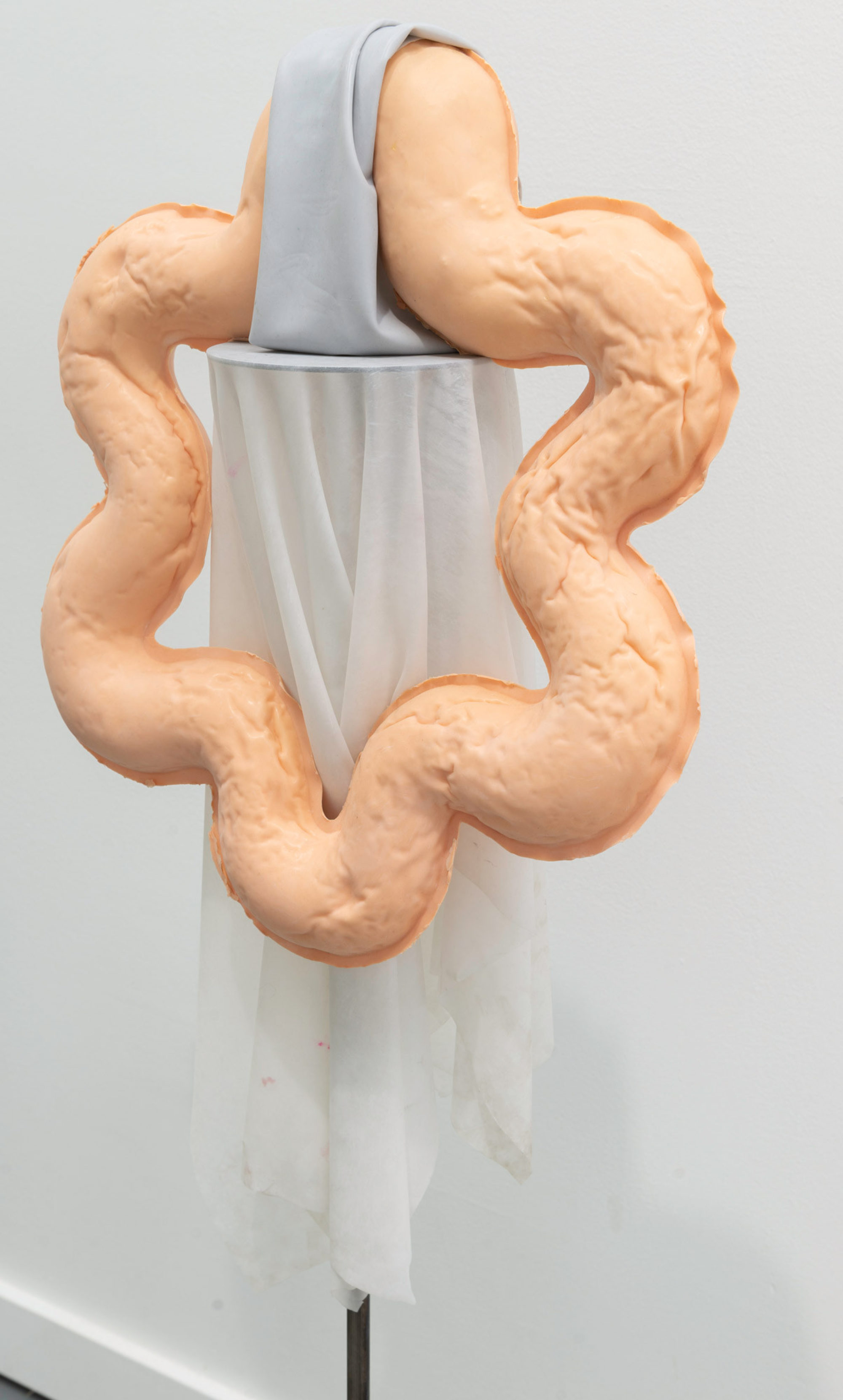
The bodily implications of governmental systems are also made visible in Poggioli's Mesh Simulation - Boston Scientific. Responding to the FDA's massive 2019 recall of transvaginal mesh products, Mesh Simulation reimagines these structural devices in a vibrant blue silicone that struggles to support itself, tearing and collapsing under its own weight. The saturated color-designed to be seen inside the human body-is borrowed directly from the reference object. Gently swaying, the overlapping layers of the amorphous grid create a moire effect that highlights this subtle motion. Presented against the white walls of a gallery, its lack of context imitates the abstract nature of images used in the promotion and subsequent recall of these devices.
The deliberate use of material and sculptural form evoke early works by Eva Hesse and Senga Nengudi, exemplifying Poggioli's ability to update the visual language of post-minimalism to address the evolving relationship between the human body and the objects it hosts. Possible Monument for Ruth W Munro (Patent 11US2049270), replicates this formula through a composition of sculptural elements derived from patent documents and established formal typologies. Transforming both material and scale, these forms become organs in their own right, imitating their environments in a way that is both seductive and grotesque. Adapted from the speculative design of a dissolving pessary filed in 1932, Possible Monument suggests an (im)material synthesis of organism and environment.
Hidden near the heart of the city, Space p11 is a fitting location to consider the bodies we inhabit and those we host. In this context, Altunbozar's fluid structures become mere capillaries in the larger vascular system of the Chicago Pedway, and Poggioli's Mesh Simulation merges with-or separates itself from-this right-angled organ. Shifting between subject, object, and environment, each body is a temporary container-a vessel and a veil.
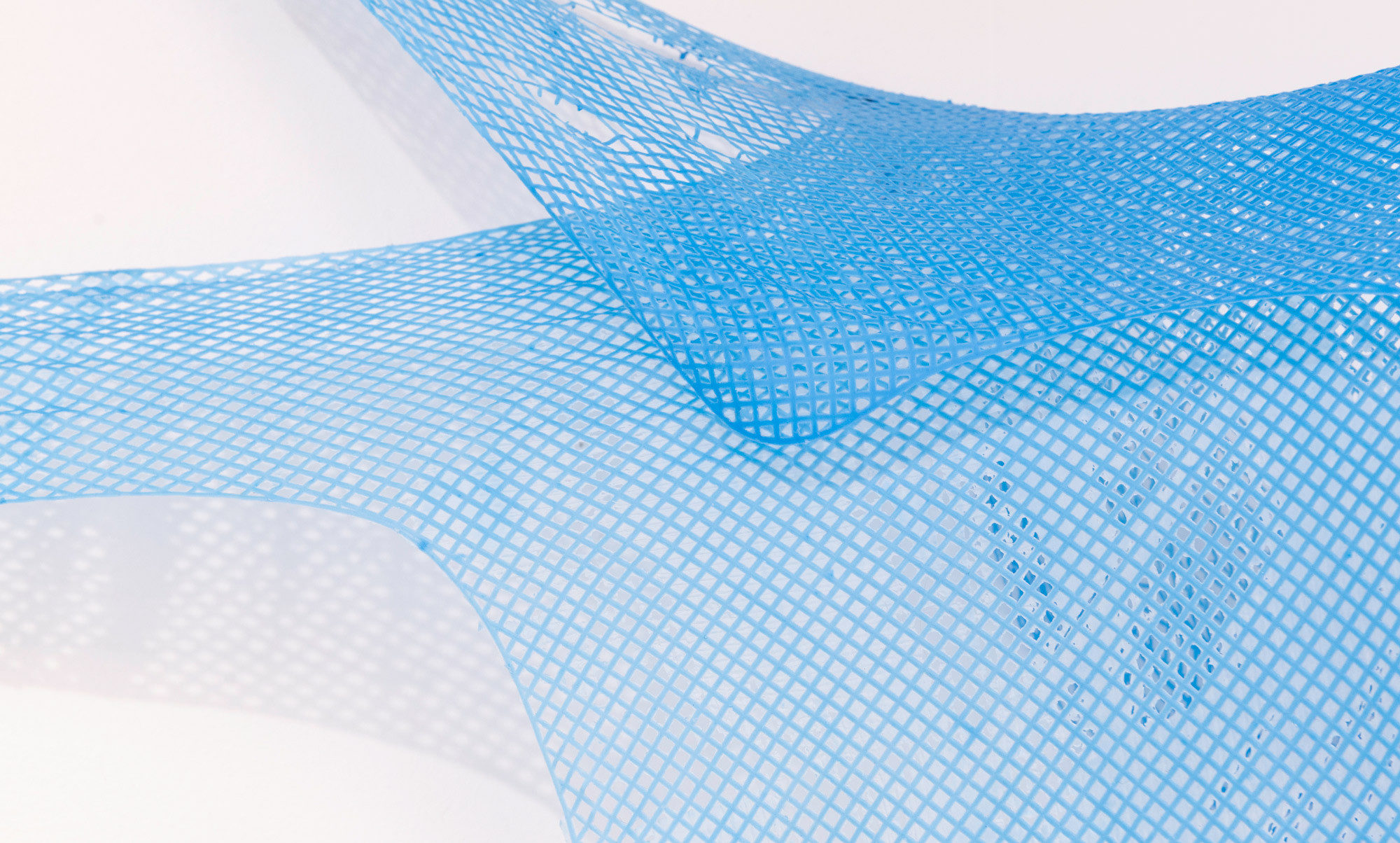
A. Faysal Altunbozar (b. 1993) is an interdisciplinary artist who employs objects, texts, and installations to generate disorienting moments that play with the overarching power structures imposed upon us. An MFA recipient from the School of the Art Institute of Chicago, his work has been exhibited in Turkey, Italy, the Netherlands, and the United States.
Martha Poggioli (b. 1988) is an artist working within design, media and social discourse. Her practice explores the consequences of overlooked systems and objects in relationship to the body. An MFA recipient from the School of the Art Institute of Chicago, she will undertake the LeRoy Neiman Foundation Ox-Bow Fellowship in the Summer of 2019.
Duncan Bass (b. 1990) is a cultural critic, curator, and art historian researching the intersections of art and contemporary culture, with an emphasis on the societal implications of technology and the politics of visuality. Bass is a graduate of the School of the Art Institute of Chicago, where he studied Art History, Theory, & Criticism, and Arts Administration & Policy.
Photos by Nathan Keay